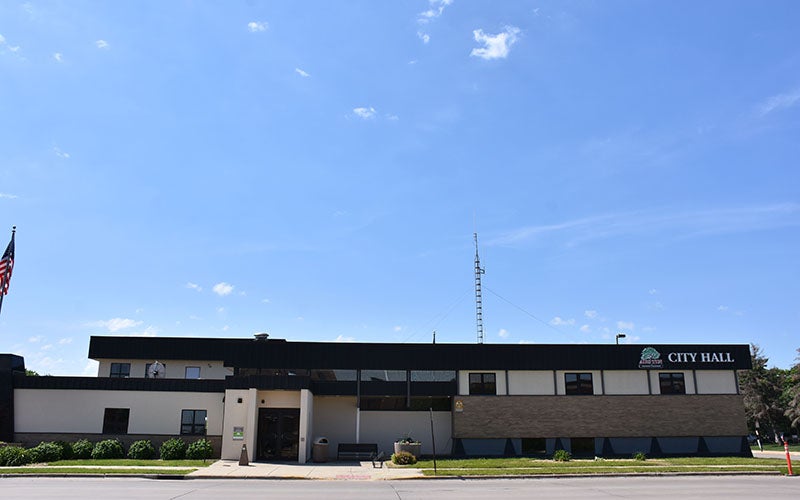City Council hears proposals as design for one-way project begins to be refined
Published 6:07 pm Tuesday, March 5, 2024

- Herald file photo
|
Getting your Trinity Audio player ready...
|
With the design choice for the one-way project on Oakland and First Avenues, scheduled to begin in 2025 out of the way, the council began Monday night to hear proposals in further refining the design details.
In January, the City Council approved in a slim 4-3 vote the option that would narrow the current overall width of the two roadways by three feet from 44 to 41 feet in order to make room for wider sidewalks that would accommodate both pedestrians and cyclists, as well as slim down the driving lanes in order to try and decrease speeds along the roads.
During Monday night’s discussion in the council’s work session, Kyle Skov of WHKS — the design firm behind the one-ways — presented proposals on items including signal lights and intersection layouts.
After a walkthrough of the signal lights, Skov recommended that intersections at Oakland Avenue and First Street NE and Oakland Avenue and First Street NW be converted to a two-way stop for both the streets.
All other signals would be left in place, but updated to better account for signal synchronization at an estimated cost of $50,000 per signal.
Skov said that a traffic analysis showed that in the years for 2023 and 2043 showed an annual growth factor of just 1%, which connected with a warrant analysis of the lights along the construction path, showing very little change was necessary as far signals were concerned.
However, councilmember Geoff Baker, an opponent of the current design, questioned the numbers related to sidewalk use in lieu of such a small rise annually in traffic and pedestrian use.
“We were told going in that we were going to have real growth in pedestrian and bike traffic … now it’s not really?” he asked, referring to the shared path.
Assistant City Engineer Mitch Wenum responded.
“The numbers are low now, but people may not feel safe today,” he said. “We’re trying to provide a safe space for people to use these roads.”
Wenum has indicated that foot and bike traffic is likely to pick up once the roads are connected to bike and walking paths already established in Austin.
The sidewalk issue has been part of a shadow of consternation from nearly the beginning of the talks over design of the project.
In the second of two surveys taken by the city, 327 (55.71%) of the 587 respondents voted for the option that maintained current specs while 227 or 38.67% voted for the council’s choice.
Businesses and residents along the route were primarily worried about parking options being taken away and questioned the need for the widened sidewalks.
Baker, along with council members Paul Fischer and Joyce Poshusta took issue with going against the wishes of the majority of people taking part in the survey.
However, those among the four council members voting for the option — Mike Postma, Jason Baskin, Laura Helle and Jeff Austin — echoed that the number of people taking part in the survey was statistically narrow.
“I think the pluses outweigh the negatives,” Baskin said in January. “We’re making it more accessible and safer for pedestrians.”
Regarding intersection layouts, Skov went over each intersection affected by the construction, which showed bump-outs, which reduce the distance to cross for pedestrians and gives designers room to address Americans with Disabilities Act requirements.
Another proposal of the design process shows an earlier transition from two-way to one-way in order to improve traffic flow during the transition on Oakland Avenue. If the proposal is adopted, then the one-way would begin at First Street rather than Main Street.
Again, it was Baker who questioned the necessity of changing it and lamented that businesses along that stretch might take issue with the change from two-way to one-way.
He urged a conversation with businesses before decisions were made.
“I think you need to talk with the impacted businesses and have a willingness to compromise with what they want,” Baker said.
No decisions were made Monday night and Skov added that none of these proposals were absolute, but also urged council to make decisions sooner rather than later.
“We’re working through the design. We’re over 30% of the design on the two roadways,” he said, adding that they would like some direction in the next month in order to keep the process going.





